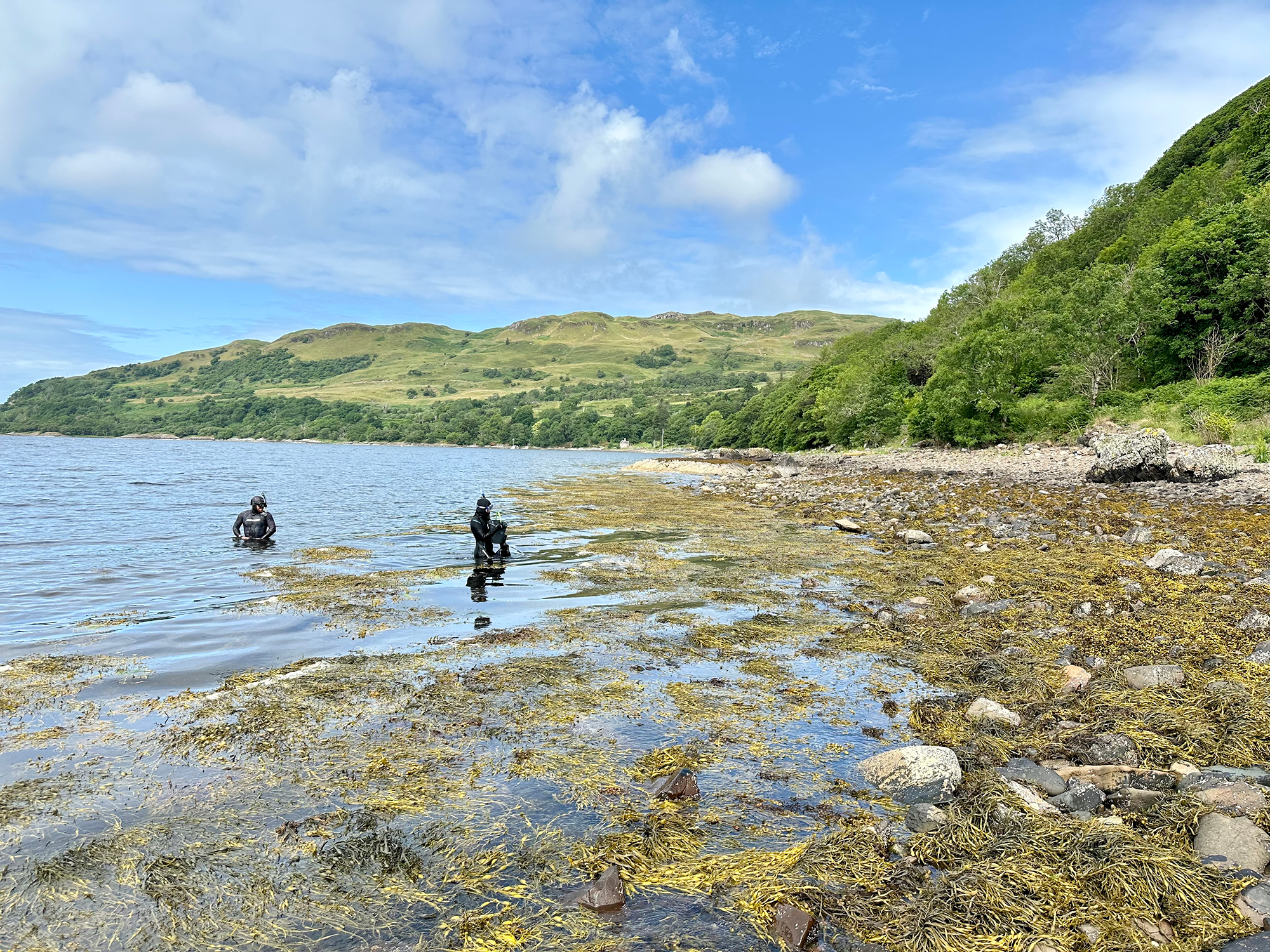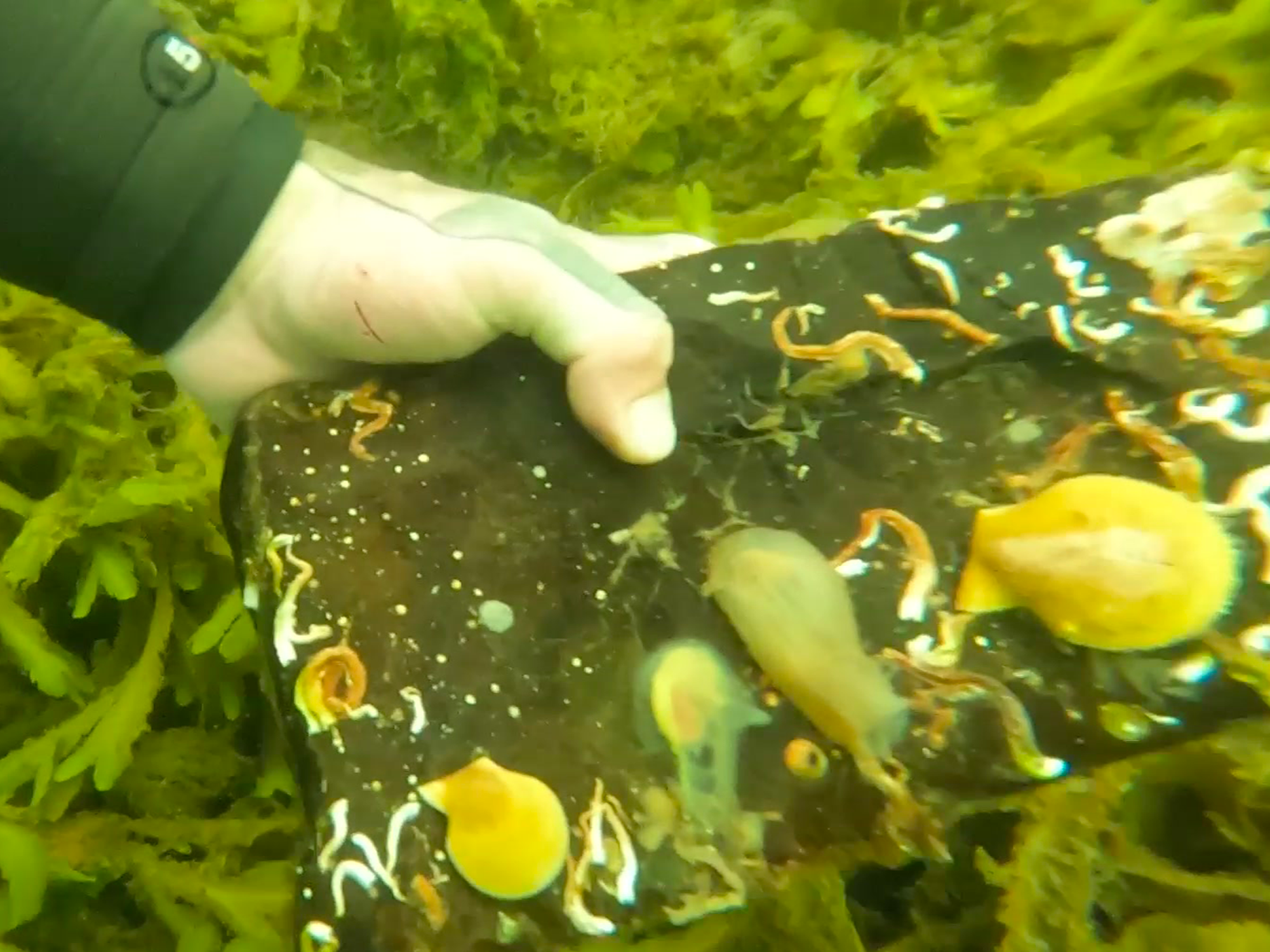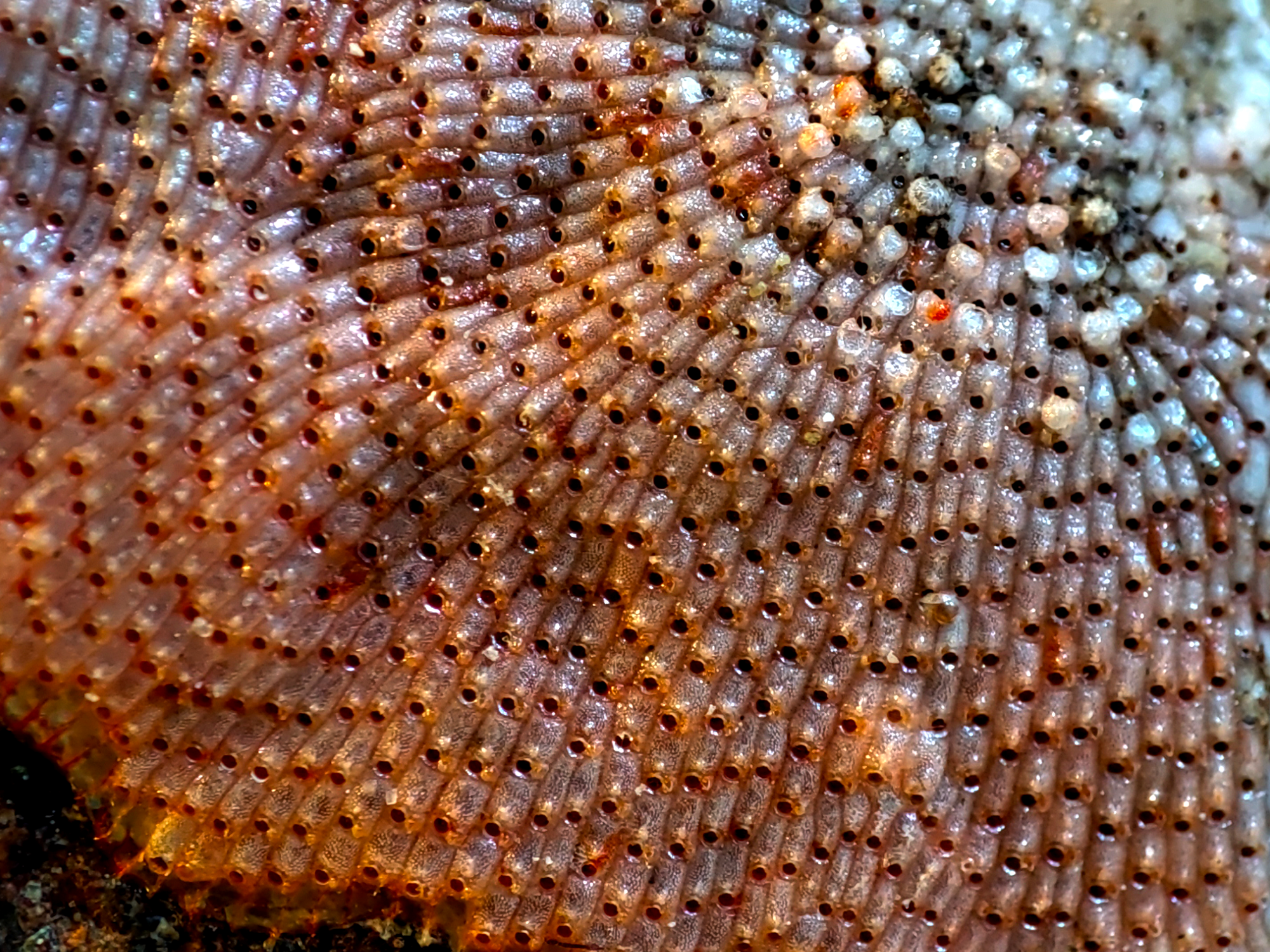The boulderfields of Loch Melfort shallows are bursting with life
An international team of ecological researchers visited Kilchoan Estate to investigate the biodiversity hidden underneath boulders, cobbles and pebbles in West Scotland’s sea lochs in July 2023. PhD students Franzi Koch (Hohenheim, Germany) and Berna Moreno (Sopot, Poland) spearheaded this investigation as part of their studies with the invaluable support of Marnik van Cauter from the Kilchoan Estate.
A casual glance at old rocks high on coastal shores shows a mass of lichens all competing for space. The underside of boulders on Loch Melfort’s seabed have similar encrusting life fighting for the same precious resource; space to grow into, eat and reproduce from. This life includes tube worms, corals, anemones, sponges and sea mosses (bryozoans). In just a square metre there are tens of species interacting in complex ways. Franzi is exploring how competition for space among bryozoans forms a complex network of interactions. Her studies involve building and testing mathematical models to help us understand how communities are organised and perhaps understand their vulnerability to change. Berna is interested in similar rock-encrusting assemblages in Arctic fjords to the north of Scotland. Measuring and understanding patterns in West Scotland provides a potential sneak preview into how life in the shallows may alter with climate change to the north.


A rock undersurface showing different encrusting animals and two juvenile scallops, with seaweed (toothed wrack) as background.
After collecting rocks from the four sites by snorkelling, the researchers examined them under microscopes to identify bryozoan species and their interactions. In total, analysing all collected rocks will take about a week. The result will be a matrix containing the outcomes of all battles for space on the rocks. In the months to come Franzi and Berna will put this data into their bigger databases and models. It will hopefully become an important jigsaw piece in understanding our rich coastal biodiversity and thus how to better protect, monitor and restore it.

A funky bryozoan colony encrusting rock surfaces.
